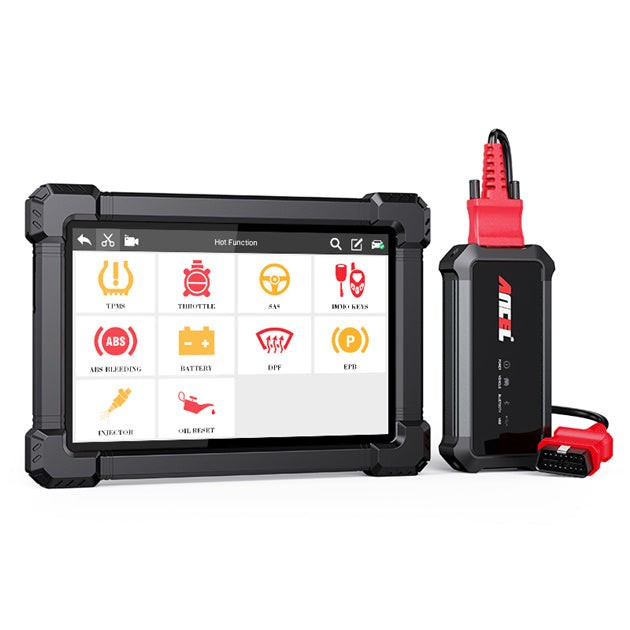On-Board Diagnostics II (OBD2) technology allows mechanics and car enthusiasts to delve into the inner workings of their vehicles. This standardized system, mandatory in US cars since 1996, monitors engine performance and other vital components. A key feature of advanced OBD2 scanners is the ability to initiate active tests, also known as bi-directional controls. This article will guide you on how to perform active tests using a Bluetooth OBD2 scanner.
Understanding Active Tests (Bi-Directional Control)
Active tests go beyond simply reading diagnostic trouble codes (DTCs). They allow you to command specific components to activate, helping pinpoint the source of a problem. For example, you could command a fuel injector to pulse or an EGR valve to open and close. This provides real-time feedback and confirms whether components are functioning correctly. Initiating active tests requires a Bluetooth OBD2 scanner with bi-directional control capabilities. Not all scanners offer this functionality, so ensure your scanner supports it before proceeding.
Connecting Your Bluetooth OBD2 Scanner
Before initiating any tests, connect your Bluetooth OBD2 scanner to your vehicle:
- Locate the OBD2 Port: The OBD2 port is typically located under the dashboard on the driver’s side, near the steering wheel.
- Plug in the Scanner: Insert the scanner into the OBD2 port.
- Turn the Ignition On: Turn the ignition key to the “On” position, but do not start the engine. This powers up the scanner and allows it to communicate with the vehicle’s computer. Some tests might require the engine to be running; consult your scanner’s manual for specific instructions.
- Pair via Bluetooth: Enable Bluetooth on your smartphone or tablet and pair it with the OBD2 scanner. This usually involves entering a PIN code provided in the scanner’s manual.
- Launch the App: Open the app associated with your Bluetooth OBD2 scanner.
Initiating an Active Test
Once connected and the app is running:
- Navigate to Active Tests: Find the section within the app dedicated to active tests or bi-directional control. This might be labeled “Active Tests,” “Bi-Directional Control,” or something similar.
- Select the System: Choose the system you want to test, such as the engine, transmission, ABS, or emissions system.
- Choose the Component: Select the specific component you wish to test within the chosen system. For example, within the engine system, you might choose fuel injectors, ignition coils, or the EGR valve.
- Initiate the Test: Follow the on-screen prompts to initiate the active test. The app will guide you through the process, specifying any necessary precautions.
Safety Precautions
Active tests can potentially engage components that affect your vehicle’s operation. Take these precautions:
- Consult Your Vehicle’s Manual: Understand the potential effects of activating specific components.
- Safe Environment: Perform tests in a safe, well-ventilated area with the parking brake engaged.
- Transmission in Park: If testing components that affect the drivetrain, ensure the transmission is in Park or Neutral.
Conclusion
Initiating active tests with a Bluetooth OBD2 scanner is a powerful diagnostic technique. It empowers you to isolate faulty components and make informed repair decisions. Remember to choose a compatible scanner with bi-directional control capabilities, follow safety precautions, and consult your vehicle’s manual before performing any tests. This powerful tool, combined with careful diagnosis, can significantly enhance your vehicle maintenance and troubleshooting experience.

